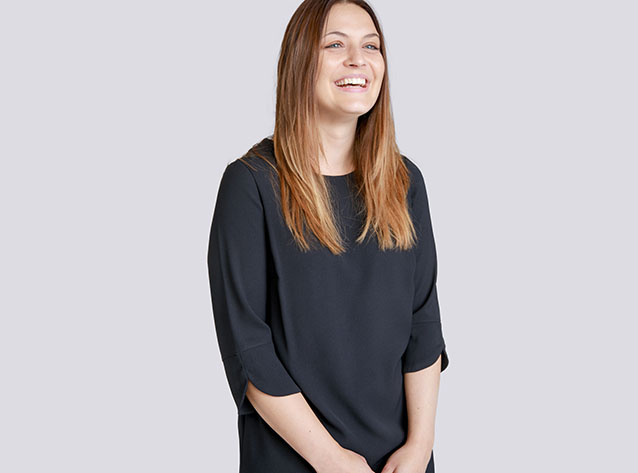Teacher's Blog: What is a Kindergarten?

This week's blog comes from our Kindergarten Teacher, Emma Sharp, who explains what it's like teaching our youngest pupils and why we call it a Kindergarten rather than a nursery.
"We scaffold the space for our young people to develop and strengthen their skills"
We are often asked about our reasons behind calling our pre-school learning environment ‘Kindergarten’ instead of ‘Nursery’. The ideology of the Kindergarten, meaning ‘Children’s Garden’, was created by German educator Friedrich Froebel. He believed in the importance of play in learning and his philosophy underpins everything we do in St. Aloysius’ Kindergarten.
Our duty as practitioners in the Kindergarten is to create space for children to develop with consideration of their needs and abilities. We scaffold the space for our young people to develop and strengthen their skills. We know every young person as an individual so that we can step back and observe their learning, but also know when it is necessary to step in and extend or develop the experience. Froebel created his Kindergarten structure through hours of observation of children and it is through his model that we have created the structure through which we prepare our young people for school. This individualised learning allows us to develop our young people in the Jesuit traditions of our school, laying the foundations for the beginning of an exciting and fruitful school journey through the College and beyond. As St. Ignatius said, a Jesuit school should be about “improvement in living and learning for the greater glory of God and the common good.” That is, an emphasis on excellence in learning and also the formation of individuals who will live good and virtuous lives.
We use observation daily in our support and assessment of our young people’s learning and interests. Our Kindergarten staff allow children to show through their play that they are becoming capable and competent learners. Cathy Nutbrown states:
“Children approach their learning with wide eyes and open minds, so their educators too need wide eyes and open minds to see clearly and to understand what they see.”
Respectful Educators – Capable Learner (1996)
When observing our young people, we record exactly what we can see and hear. We then use these observations to reflect upon skills each individual child is displaying. For example, a child may demonstrate perseverance when working on a challenging activity or may concentrate for extended periods of time. We can also gauge from our observations where children may require some development and this allows us to put support in place to develop an area of learning. By observing closely and recording each individual child’s experiences, we are able to create individualised Learning Journey’s for our young people. We observe interests in children’s play and use these ideas to develop Learning Backdrops for learning in subsequent weeks. We also use our observations to track potential gaps in children’s knowledge, so that we can address this and put rich learning experiences in place. Thus preparing them for commencing their Junior School journey.
Our planning and provision flows indoor and outdoor. Children have a variety of focused experiences for the week, however, where children show an alternative interest, we follow that enthusiasm and change our planning accordingly. Children can often surprise us with what they say and think and it is important for us to explore these ideas with them and encourage them to be broad-minded and motivated in finding out information they wish to know. We seek to develop unique, well-rounded and happy individuals in a safe and nurturing environment.
Finally, I think it is important to mention the importance of parental input in children’s learning in Kindergarten. Your children accomplish small victories every single day at home and in Kindergarten. We ask that any small achievement from home is shared with the Kindergarten Team. That way, we can ensure that there is input from home and school in order to ensure we have a full picture of every child and their learning. Whether it be putting on their own shoes in the morning, to writing a special letter, or perhaps sharing some learning from Kindergarten that day, it is important that it is celebrated both at home and in Kindergarten and is used to inform our knowledge of that young person and their next steps in learning to become the best that they can be.
Froebel stated that ‘Play is the highest expression of human development in childhood for it alone is the free expression of what is in a child's soul.’ As adults, we can often lose sight of the joy and enthusiasm new experiences can bring to us in the hustle and bustle of our day-to-day experiences. I can honestly say that Kindergarten allows children to create and enjoy fun, engaging and varied experiences and I implore you to come along to our ‘Children’s Garden’, find your ‘inner-child’ and join us in enthusiasm and love of learning.
